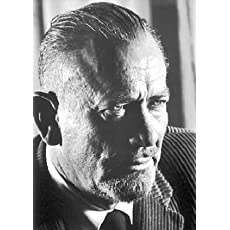Free Support 24/7
+255 743 952 935

Follow to get new release updates, special offers (including promotional offers), and improved recommendations.
John Steinbeck is perhaps best known for Of Mice and Men and The Grapes of Wrath, which led to his Nobel Prize for Literature award in 1962. Born in Salinas, California in 1902, Steinbeck grew up in a fertile agricultural valley about twenty-five miles from the Pacific Coast: both valley and coast would serve as settings for some of his best fiction. In 1919 he went to Stanford University, where he intermittently enrolled in literature and writing courses until he left in 1925 without taking a degree. During the next five years he supported himself as a labourer and journalist in New York City, all the time working on his first novel, Cup of Gold (1929). After marriage and a move to Pacific Grove, he published two California books, The Pastures of Heaven (1932) and To a God Unknown (1933) and worked on short stories later collected in The Long Valley (1938).
Popular success and financial security came only with Tortilla Flat (1935), stories about Monterey's paisanos. A ceaseless experimenter throughout his career, Steinbeck changed courses regularly. Three powerful novels of the late 1930s focused on the California labouring class: In Dubious Battle (1936), Of Mice and Men (1937), and the book considered by many his finest, The Grapes of Wrath (1939).
Being partly based on his own experiences as a travelling worker, Steinbeck originally wanted Of Mice and Men to be titled 'Something That Happened'. The book explores themes of powerlessness, loneliness and empathy and received the greatest positive critical response of any of his works up to that point. It has achieved success as a novel, a Broadway play and three acclaimed films.
Steinbeck's compassionate depiction of the poor in The Grapes of Wrath helped the book become an immediate publishing phenomenon, discussed on a national scale and becoming an instant bestseller. The book was described by the Nobel Prize committee as a "great work" and stated that it was one of the main reasons for granting Steinbeck the Nobel Prize for Literature in 1962.
Early in the 1940s, Steinbeck became a filmmaker with The Forgotten Village (1941) and a serious student of marine biology with Sea of Cortez (1941). He devoted his services to the war, writing Bombs Away (1942) and the controversial play-novelette The Moon is Down (1942). Cannery Row (1945), The Wayward Bus (1948), another experimental drama, Burning Bright (1950), and The Log from the Sea of Cortez (1951) preceded publication of the monumental East of Eden (1952)East of Eden (1952), an ambitious saga of the Salinas Valley and his own family's history.
The last decades of his life were spent in New York City and Sag Harbor with his third wife, with whom he traveled widely. Later books include: Sweet Thursday (1954)The Short Reign of Pippin IV: A Fabrication (1957), Once There was a War (1958), The Winter of Our Discontent (1961), Travels with Charley in Search of America (1962), America and Americans (1966) and the posthumously published Journal of a Novel: The East of Eden Letters (1969),Viva Zapata! (1975,The Acts of King Arthur and His Noble Knights (1976), and Working Days: The Journals of The Grapes of Wrath (1989).
He died in 1968, having won a Nobel Prize in 1962.
Photo by Nobel Foundation [Public domain], via Wikimedia Commons